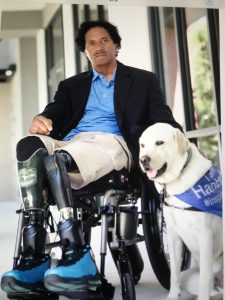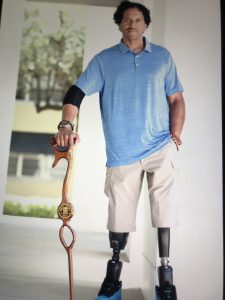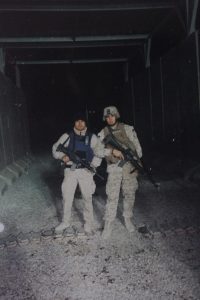This January, an Administrative Law Judge approved a settlement reached by Javier Ruiz, Esq. relating to home modifications needed by a client (pictured below with his consent) in a Defense Base Act (DBA) case. The case involved litigation of complex legal issues requiring expert testimony as to the modifications needed to the client’s home. For instance, a wheelchair bound injured worker will need lower light switches, doors widened, ramps created, and lower sinks.
To accomplish these necessary modifications, this firm took the depositions of engineers and accessibility experts who testified as to the necessity and cost of home modifications. Mr. Ruiz travels the country in his pursuit of justice and fairness for our clients. Attorneys Jo Ann Hoffman & Associates are proud to be able to help injured workers like this who are often ignored by insurance companies.
Multitude of Benefits Available Under the Defense Base Act/Longshore Act
Do you know the types of benefits available to you if you are injured in an accident covered by the Defense Base Act/Longshore Act? Broadly speaking, there are two types of benefits available under the DBA: 1) compensation benefits and 2) medical benefits. Home modification falls under medical benefits.
Many injured workers incorrectly assume that medical benefits simply means doctors visits, surgeries, medication, and physical therapy. Fortunately, the definition of medical benefits under Section 907 of the Act is very broad, so broad that it not only includes purely medical benefits like doctors visits, surgeries, medication, and physical therapy, but the definition also includes medically necessary and reasonable apparatus. Continue reading →
 Florida Injury Attorneys Blog
Florida Injury Attorneys Blog





 Hearing loss under the Longshore and Harbor Workers’ Compensation Act, as extended by the Defense Base Act, is compensated under Section 8(c)(13) as a scheduled injury, resulting in a scheduled award. It is a traumatic injury in that the harm occurs immediately upon exposure.
Hearing loss under the Longshore and Harbor Workers’ Compensation Act, as extended by the Defense Base Act, is compensated under Section 8(c)(13) as a scheduled injury, resulting in a scheduled award. It is a traumatic injury in that the harm occurs immediately upon exposure. Section 10 of the
Section 10 of the